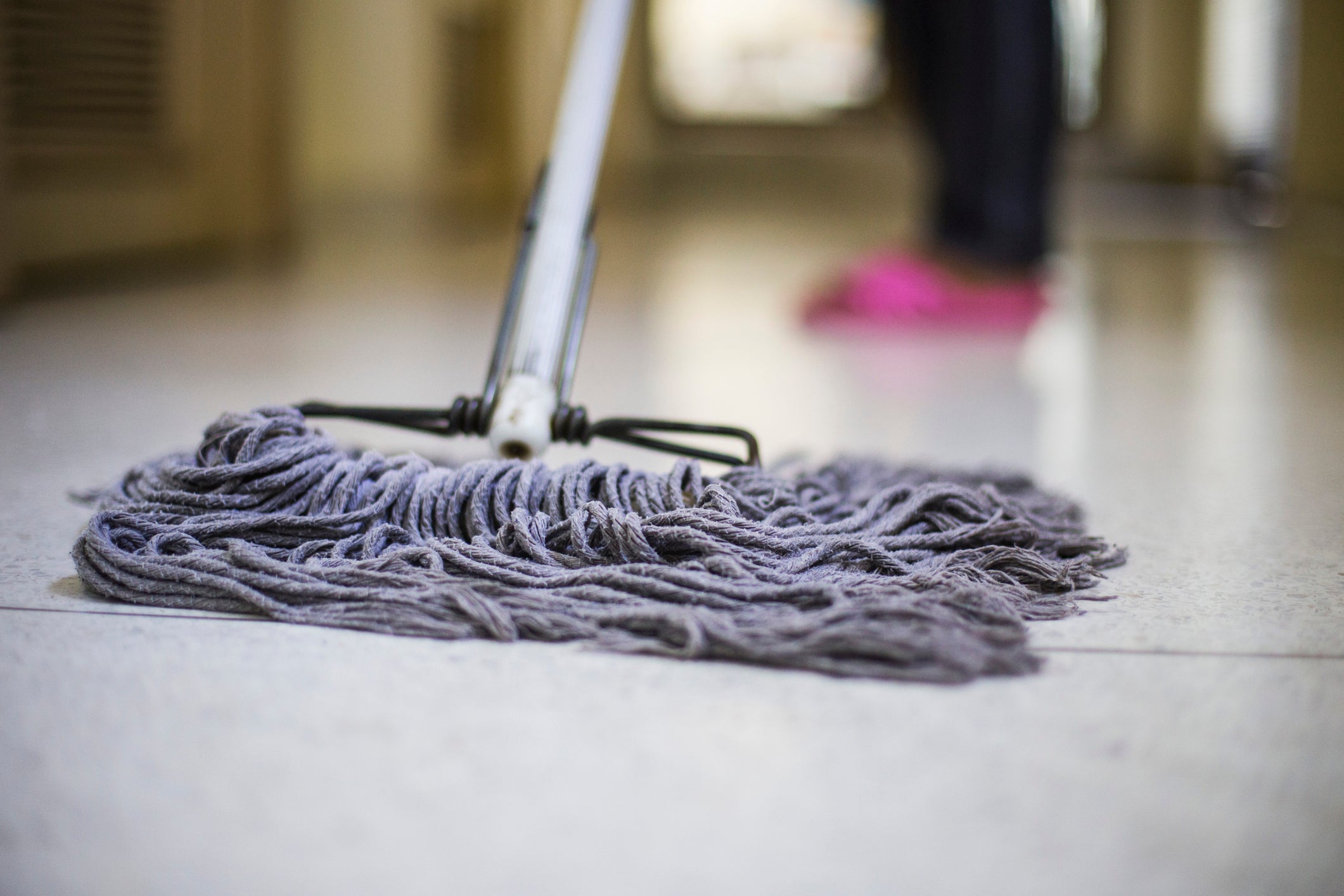Imagine yourself standing in your kitchen, staring at a stubborn stain on your tile floor. It’s that dreaded coffee spill, or perhaps a mysterious greasy mark left by an unknown culprit. You reach for the bleach, thinking it’s the ultimate solution. But wait! Is using bleach on tile floors actually a good idea? While many swear by the power of bleach for cleaning, the truth is a bit more nuanced.

Image: jjvs.org
This article will delve into the complexities of using bleach on tile floors, exploring both the benefits and drawbacks, and ultimately providing you with the knowledge to make informed cleaning decisions.
The Power of Bleach: A Double-Edged Sword
Bleach is a powerful disinfectant known for its ability to kill bacteria, viruses, and mold. It’s a staple in many cleaning cabinets, prized for its affordability and effectiveness in tackling tough stains. But before diving into the potential benefits of bleach on tile floors, let’s address the elephant in the room: its downsides.
The Risks of Using Bleach on Tile Floors:
-
Tile Damage: While bleach can effectively sanitize, it can also strip away the sealant and finish on certain types of tile, causing discoloration or dullness. Natural stone tiles such as marble, granite, or travertine are particularly susceptible to damage from bleach. The porous nature of these materials allows bleach to penetrate the surface, causing etching and irreversible damage.
-
Color Fading: Bleach is notorious for fading colors, which can be disastrous if your tile floors have intricate designs or colorful grout. Even if your tiles are not directly exposed to bleach, the fumes can seep into the grout and lead to discoloration over time.
-
Health Hazards: Inhaling bleach fumes can be dangerous, especially for people with respiratory sensitivities. The combination of bleach with other cleaning products, such as ammonia, can create deadly fumes. It is essential to always work in well-ventilated areas when using bleach, and to wear protective gear like gloves and goggles to prevent contact with skin and eyes.
-
Floor Discoloration: Bleach can react with certain materials like metals, causing them to rust or tarnish. This could be a problem if your grout contains metal additives or if there are metal accessories near your floor. The reaction with metal can lead to unwanted brown or yellow stains on your tile floors.
When Can Bleach be Used Safely on Tile Floors?
While bleach should be used with caution, it can be effective for cleaning certain types of tile floors.
-
Glazed Ceramic and Porcelain Tiles: These types of tiles are the most resistant to bleach damage due to their glazed surface. However, always conduct a spot test in an inconspicuous area first to ensure the bleach does not affect the sealant or color.
-
Unglazed Tiles: Use bleach with extreme caution on unglazed tiles, as they are more susceptible to discoloration and damage. Apply diluted bleach sparingly and rinse thoroughly to minimize risks.
-
Grout Cleaning: Bleach can be effective for removing stubborn stains and discoloration from grout. However, ensure the bleach is diluted properly and apply it with a soft-bristled brush, being careful not to scrub too aggressively.

Image: homeappliancegeek.com
Bleach Alternatives for Tile Floor Cleaning
If you are hesitant about using bleach, consider these safer alternatives:
-
Baking Soda: A versatile cleaner, baking soda can be used to scrub away stains and deodorize your tile floors. Mix it with water to create a paste, apply it to the stain, and scrub gently.
-
Vinegar: White vinegar is a natural disinfectant and cleaner that can help remove grime and stains from tile floors. Mix a solution of equal parts water and vinegar and apply it to the floor, allowing it to sit for a few minutes before scrubbing.
-
Commercial Tile Cleaners: There are many commercial tile cleaners on the market specifically designed to clean and sanitize tile floors without the risk of damaging the surface.
Expert Tips for Using Bleach Safely on Tile Floors
For those who choose to use bleach on their tile floors, follow these expert tips to ensure safety and prevent damage:
-
Dilute, Dilute, Dilute: Always dilute bleach with water before applying it to your tiles. A good rule of thumb is to use a solution of one part bleach to ten parts water.
-
Spot Test First: Before using bleach on your entire tile floor, test it on an inconspicuous area to ensure it does not damage the finish or change the color.
-
Apply Gently: Avoid soaking your tiles in bleach, apply it directly to the stain, and don’t scrub too vigorously.
-
Rinse Thoroughly: Thoroughly rinse your tile floor after cleaning with bleach to remove any residue that could cause discoloration or damage.
-
Ventilate the Area: Ensure the area is well-ventilated when using bleach to minimize exposure to harmful fumes.
Can You Put Bleach On Tile Floors
Conclusion
Cleaning your tile floors shouldn’t be a gamble with your floor’s health. While bleach is a powerful disinfectant, understanding its risks and mastering safe and effective application techniques is crucial. Remember, alternatives like baking soda, vinegar, and commercial tile cleaners offer just as much cleaning power without the potential for damage. By making informed choices and employing responsible cleaning practices, you can keep your tile floors sparkling clean and damage-free, for years to come.






